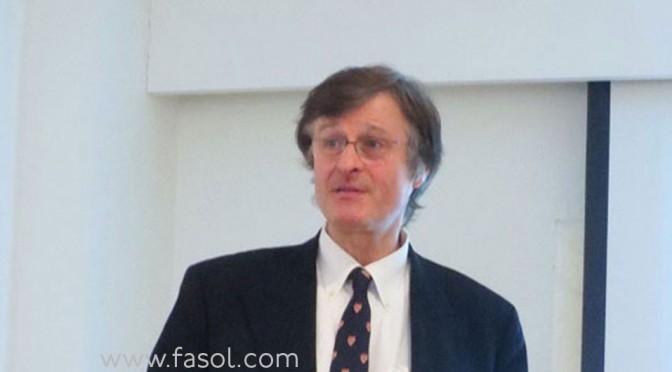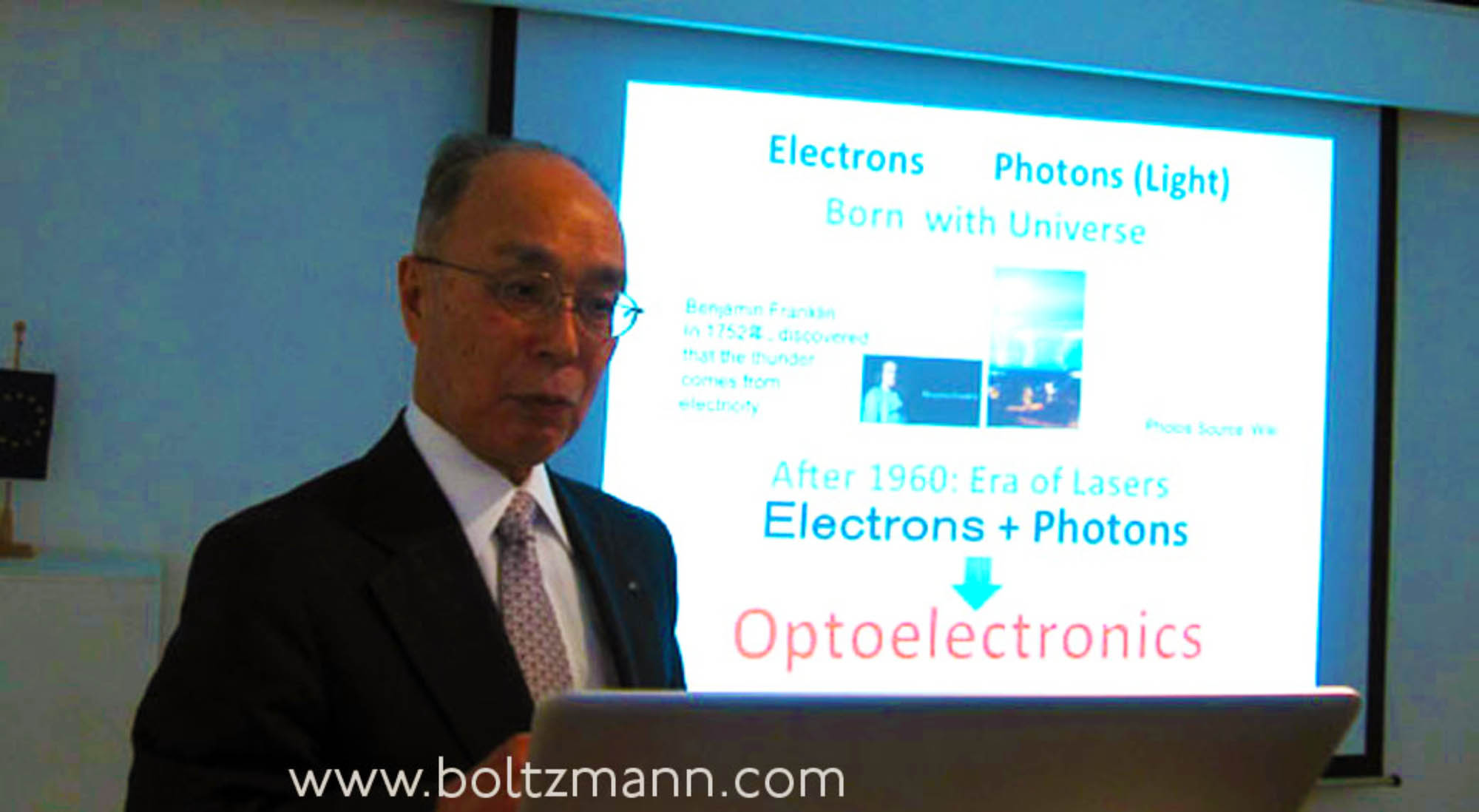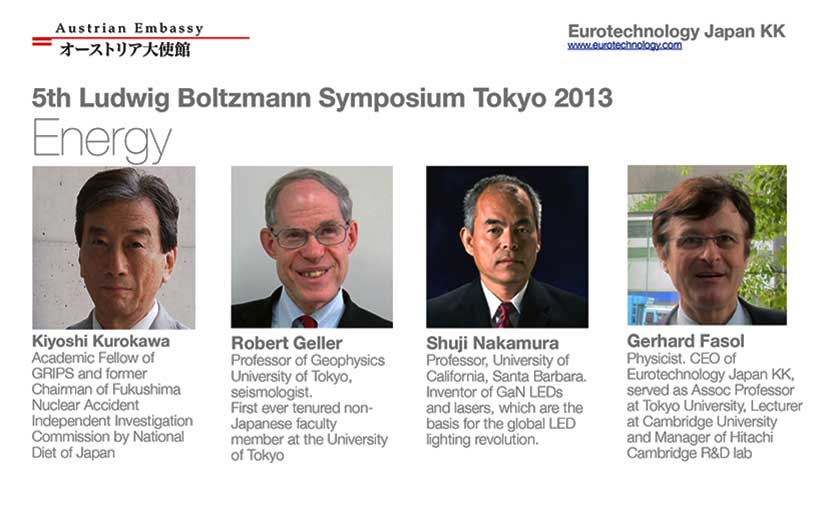Tag: Boltzmann
-

Ludwig Boltzmann – Energy, Entropy, Leadership by Gerhard Fasol (6th Ludwig Boltzmann Symposium)
Ludwig Boltzmann as leader (Gerhard Fasol, CEO of Eurotechnology Japan KK. Served as Associate Professor of Tokyo University, Lecturer at Cambridge University, and Manger of Hitachi Cambridge R&D Lab.) Keynote presented at the 6th Ludwig Boltzmann Symposium on February 20, 2014 at the Embassy of Austria in Tokyo. Ludwig Boltzmann, the scientist Ludwig Boltzmann’s greatest…
-

VCSEL – Vertical cavity surface emitting lasers by their inventor, Kenichi Iga (6th Ludwig Boltzmann Symposium)
VCSEL inventor Kenichi Iga: hv vs kT – Optoelectronics and Energy (Former President and Emeritus Professor of Tokyo Institute of Technology. Inventor of VCSEL (vertical cavity surface emitting lasers), widely used in photonics systems) Keynote presented at the 6th Ludwig Boltzmann Symposium on February 20, 2014 at the Embassy of Austria in Tokyo. VCSEL: how…
-

Energy – 5th Ludwig Boltzmann Symposium, Tokyo, Feb 20, 2013
Energy 5th Ludwig Boltzmann Symposium – speakers: Robert Geller, Gerhard Fasol, Kiyoshi Kurokawa, Shuji Nakamura Wednesday, 20th February 2013, Embassy of Austria, Tokyo Registration: latest 10 February 2013 (by invitation only) Further information: Peter Storer, Minister for Cultural Affairs, Embassy of Austria Summary by Gerhard Fasol Robert Geller: “A seismologist looks at nuclear power plant…